Ultimate Guide to Autumn / Fall Photography
by Alex W.
It may be the height of summer when I’m writing this, but for me it’s time to start looking ahead to the glorious fall days and all the photography opportunities that autumn brings.
Autumn is possibly my favourite season for photography. The harsh summer light mellows out to a softer disposition, the tourist crowds die down, and the changeable weather creates some fantastically unpredictable conditions.
More than all of that though, I love the colour. Blazing reds, oranges, and yellows and subtle hues of brown and green bathe the landscape in a myriad of colours and open the door to endless opportunity for all types of photographer.
Whether you’re interested in landscape, wildlife, portrait, pet, macro, street or wedding photography, there is opportunity all around you once autumn arrives.
But it can be a fleeting season. One stormy night can ruin a promising autumn in the blink of an eye and leave the branches bare and weather-beaten, so make sure you make the most of it while it lasts!
Contents
You Might Like… Ultimate Guide to Forest Photography
General Tips for Autumn Photography
Before we delve into the subject specific opportunities that await you, it’s worth taking heed of some generalised hints and tips for shooting in the autumn. This advice spans all genres of photography in the autumn, so don’t skip it!
Dress for the Weather… All the Weather.
Autumn is an incredibly unpredictable season in terms of weather. What starts as an unseasonably warm fall day can quickly turn into a deluge of heavy showers and sleet.
It’s not uncommon to experience all four seasons in a single day when out shooting in the autumn, so prepare for the worst before you head out.
You Might Like… Photography in the Rain – Making the Most of a Rainy Day
Always pack winter clothing if you’re heading away from civilisation with the camera. Even if it’s a bright and warm morning the autumn showers can descend in an instant. I can’t tell you the amount of times where a pleasant day has turned into a dash for the nearest cover thanks to an instantaneous hailstone shower.
Here’s a handy checklist of items that I never leave the house without when shooting in autumn:
- Warm, waterproof jacket
- Waterproof trousers
- Hiking boots
- Gloves
- Hat
- Rain cover for my camera
- Mini survival kit (seems extreme but it fits in a small pocket and means I’m prepared if anything unexpected happens. It has a whistle, matches and flint to light a fire, mini saw, and small utility knife)
- Flask of warm coffee (absolutely essential)
Don’t Give Up
The changeable weather in autumn does mean you have to prepare for discomfort, but it also means that nothing is a lost cause. If you head out for a shoot and conditions aren’t what you expected don’t just turn around and go home – Stick around!
Honestly, things can change in an instant. That sliver of light can break through the clouds, or that backlit autumn shower can release on your unsuspecting street subjects. Anything can happen in these conditions, so never give up too easily.
Buy a Polariser
I recommend a polarising filter pretty much everywhere, but for autumnal photography it’s an absolute must for me. If, for some reason, I was only allowed to use the polariser under two conditions, they would be waterfall photography first, and autumn photography second.
A polarising filter truly brings those autumn colours to life, enhancing the vibrancy of the changing leaves and eliminating the glare from the undoubtedly damp vegetation. A simple turn of the polariser can transform a scene from an ugly mess of distracting highlights so a colourful tapestry of beauty.
Good filters don’t come cheaply, we all know that. However, shelling out some cash on a good quality polariser is well worth the investment. I bought the one to the right 4 years ago and it’s still going strong.
This doesn’t just apply to landscape and nature photographers either. It can be used to reduce the glare from those wet city streets and to enhance the colours in wedding photography and portraiture.
Use the Golden Hours
The fabled Golden Hours are usually reserved for talking about landscape photography, but this applies to all genres. For those of you that don’t know, the Golden Hour refers to the hour after sunrise and before sunset when the sun is at it’s lowest and casting soft and warm light across the scene.
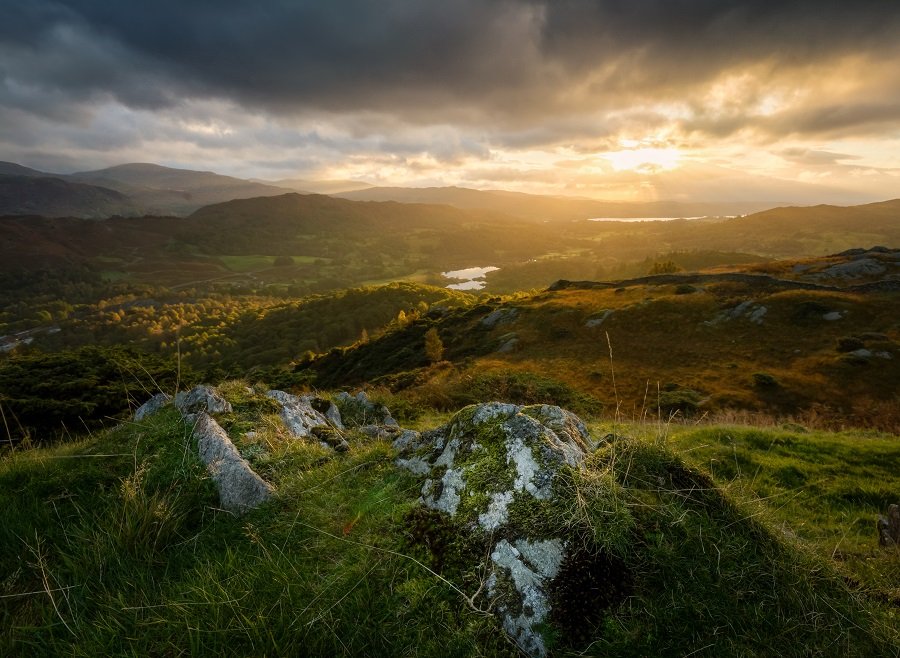
Want to make the most of the autumnal colour? Shoot in the Golden Hours to bring those colours to life.
Want dramatic lighting conditions and soft shadows for your portrait? Shoot in the Golden Hours to enhance your model.
Want a lot of contrast to bring attention to your macro/still-life subject? Shoot in the Golden Hours while the background of your subject is still in shadow.
Obviously you don’t have to limit yourself to the more unsociable hours of the day, but if you’re looking for that special moment it’s much more likely to arrive during the Golden Hours.
You Might Like… Natural Light – The Types of Light and How to Use Them
Landscape Photography in Autumn
Autumn is the favourite season for many a landscape photographer, and the reasons are rather obvious. Softer light than summer, vibrant colours in the landscape, and dramatically changeable weather conditions.
What more could you want?
Want to know more about landscape photography? Check out our Ultimate Guide to Landscape Photography eBook here.
Go Down to the Woods Today
Granted, this is a pretty obvious one. One of the most attractive aspects of autumn is the changing of the trees as they leave their lush greens behind and turn into a fiery display of yellows, oranges, and reds.
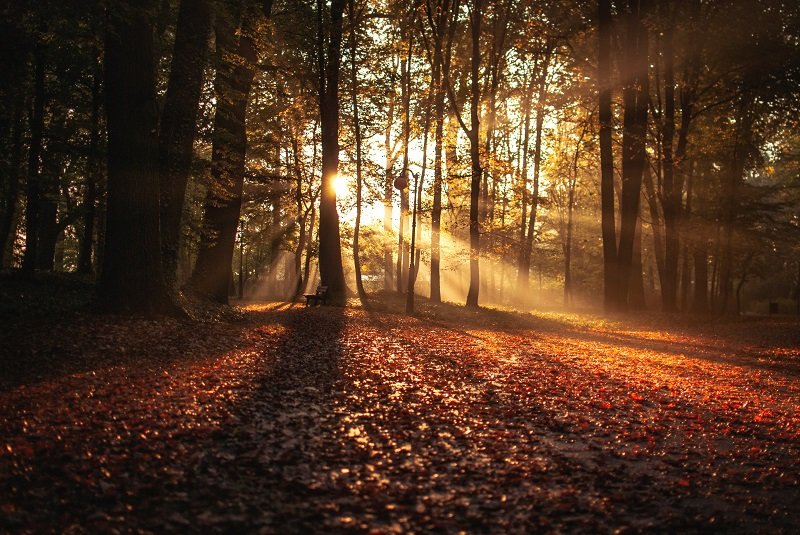
Take advantage of this and head to the nearest woodland. Forest photography can be a tough nut to crack, but all the effort and frustration is well worth it when you finally find a composition that works. Combine that with some stunning light and/or mist and the incredible autumnal colours and you have all the makings of a breathtaking images.
Couple this with a polariser to reduce the glare from wet vegetation and you can really bring the colours to life.
You can learn more about how to get the most out of woodland with our Ultimate Guide to Forest Photography.
If you need guidance on processing woodland images, check out our Forest Photography Lightroom Presets bundle here.
Capture the Autumnal Mists
Summer is often a season bereft of the stunning dawn mist that so many landscape photographers crave, but autumn sees the return of this most welcome of additions to a sunrise shoot.
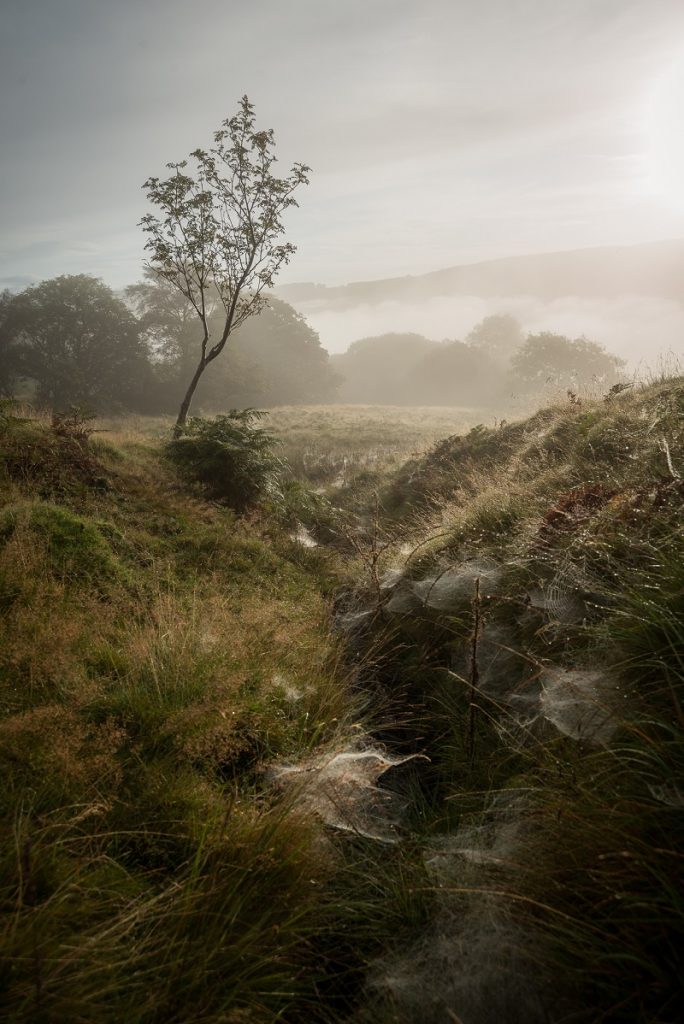
The more pronounced temperature difference between night and day, along with the changeable weather conditions, make mist a far more common occurrence in autumn and spring compared to summer and winter. Take advantage of this by setting the alarm early and finding a suitable location to capture it.
Make sure you take your time too. The mist is beautiful first thing in the morning, but the real photographic treasure comes when the sun rises high enough to start burning the mist off. This allows little pockets of the landscape to slowly emerge and the golden light to break through.
The beautiful thing about a lingering dawn mist is that it makes almost every subject more photogenic, and on a misty morning you have an overwhelming number of possibilities:
- Get back into the forest and take advantage of the atmospheric conditions. Not only does it add an extra element to the scene, but finding an uncluttered composition in forest photography is actually a lot easier in the mist.
- Get up high and shoot down into the mist-laden valleys below. Try using a telephoto lens to capture little micro landscapes, such as the autumnal trees emerging from the drifting mist.
- Head down to a lakeside or river, where the mist is likely to be the thickest, and aim for minimalism and simplicity. The mist can turn a once familiar landscape into a completely new area for you to explore.
- Camp out overnight and capture the full splendour of a cloud inversion. There’s nothing quite so incredible as standing at the top of a mountain and seeing nothing but a blanket of cloud below you, with only the peaks of nearby mountains breaking through the ocean of white below.
You can find out how to predict a misty morning or temperature inversion here, but the general premise is that you want to look out for clear, cold nights and low wind speeds. A warm, cloudy day followed by the rapid cooling caused by a clear night is helpful too.
Don’t Forget the Coast
It’s easy to get tied up in the beauty of the changing trees, but don’t forget about the coast. There may not be the same level of colours as the trees, but the changeable weather conditions make it a landscape photographer’s dream.
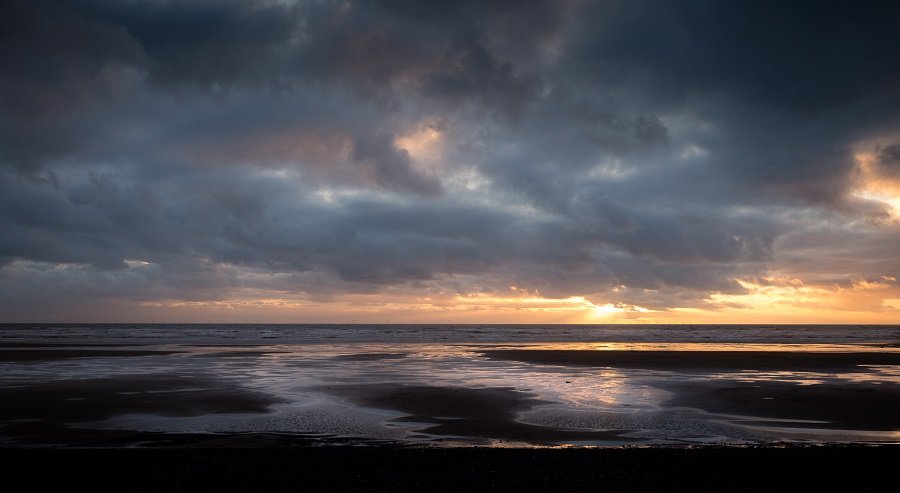
In coastal locations or island countries a lot of the weather comes in from the coast, so by heading down to the beach you get a first glimpse of the weather to come. Combine the tail end of a storm with the dramatic light of sunset and you have some of the best photographic conditions you could ever hope for.
Don’t just wait for the storm to pass though – The wild seas and heavy clouds during a storm can be excellent. This is precisely why you shouldn’t discount a day of photography just because of the bad weather.
Who said the beach is only for the summer, after all?
Pull on the Waterproofs
Following on from the above, make the most of using the whole day for photography. Autumn follows on from a long season of enduring unfavourable lighting conditions for the vast majority of the day.
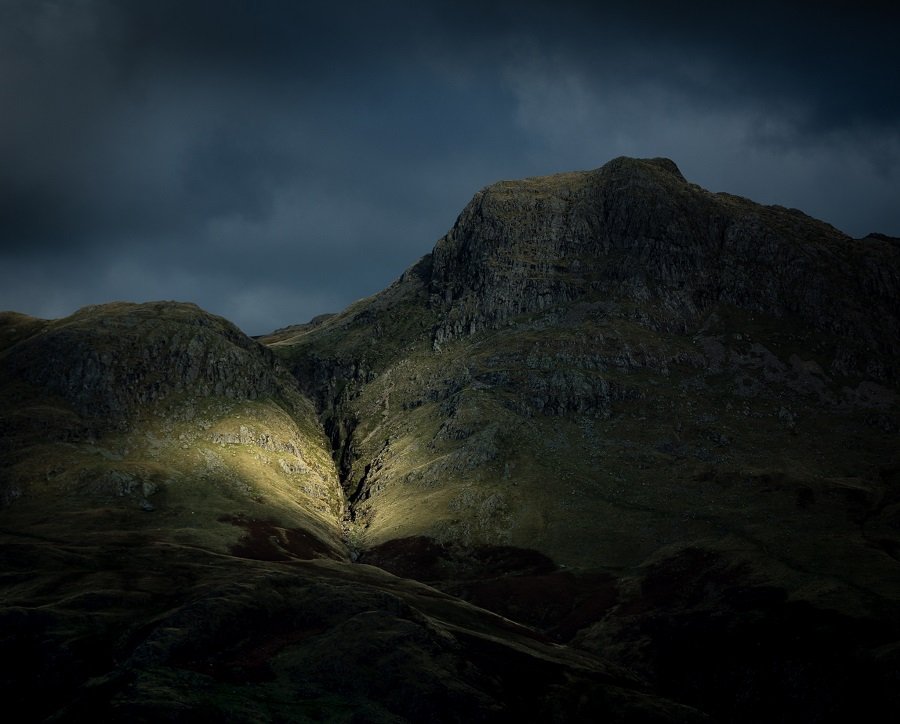
When the days become shorter and the weather wilder, the photographic opportunities increase. If you see a weather forecast predicting sunshine and showers, pull on those waterproofs and stay out all day if you can!
Making an image in the rain is a wonderful thing, but the fantastic thing about autumn is that the weather is so changeable.
- Look out for rays of sunshine breaking through the clouds and illuminating little pockets of the landscape, then use a telephoto lens to hone in on that interest.
- Wait for a passing shower to be hit by the sunlight. If you’re in between the sun and the shower you’ll see a rainbow, but if not you’ll see the falling rain sparkling in the light.
- Use a telephoto lens to zoom in on heavy rainfall in front of trees. The result can be a beautifully abstract and impressionistic image full of colour and intrigue.
Read More: Natural Light – The Types of Light and How to Use Them
Capture the Change of the Seasons
Sometimes, autumn can be a brief season. The fragility of nature means that one mildly vicious storm can strip the dying leaves from the branches in a single night and end the season of colour.
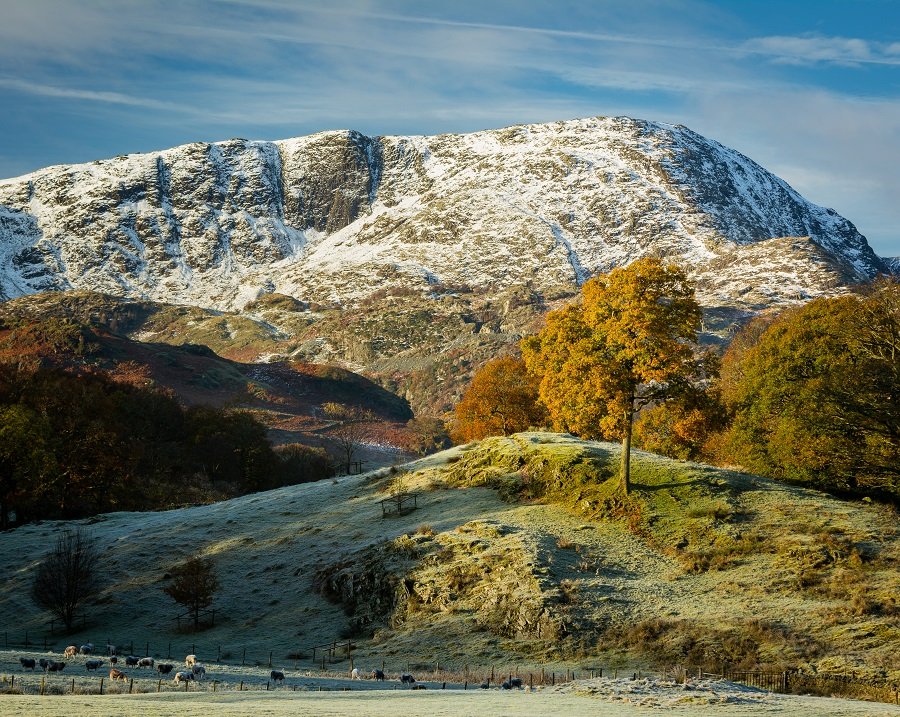
However, if you’re lucky you can go a whole autumn without this happening, and if you’re even luckier you can then try to capture the changing of the seasons in a single image. Contrasting the vivid and fiery colours of autumn with the pure whiteness of a snowy mountain makes for a stunning image and is something well worth pursuing if you experience a calm autumn and an early arrival of winter.
Remeber – You just have to be lucky… Twice!
Read More – Top Tips to Improve Your Winter Photography
Wildlife Photography in Autumn
Winter is just around the corner, and for the wildlife this means it’s time to prepare. Autumn is an extremely busy time of year for the animals of the world, and their interactions with the environment combined with dramatic weather conditions and vibrant foliage makes it the perfect time to get out and shoot some wildlife.
Birds in the Mist
The autumnal mists that are great for landscape photography lend themselves nicely for wildlife enthusiasts too. Many birds are often migrating to warmer climes in the fall, but those that remain can often be found around large water sources such as rivers and lakes.
Fortunately for us, that is where it is most likely for radiation fog to form. Capture the water-borne birds going about their daily lives in the midst of some gorgeous mist. If you wait for the light to start breaking through the dawn mist you’ve got the chance of capturing a breathtaking image. If your subject is moving, just make sure your shutter speed is fast enough to capture the action.
You Might Like… Tearing up the Rulebook – 12 Photography Rules and When to Break Them
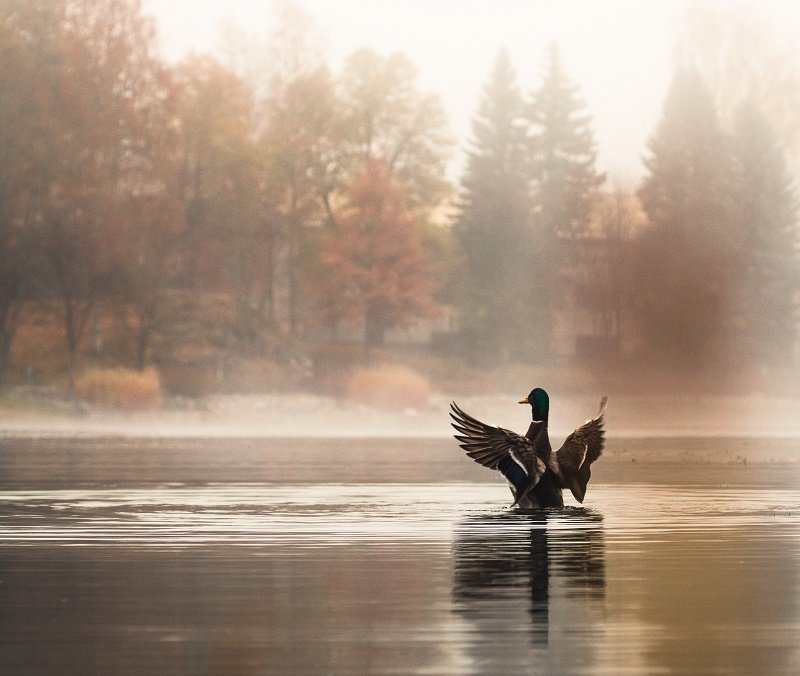
Starling Murmurations
The flocks of Starlings bedding down for the night has been hailed as one of the greatest spectacles in British wildlife, and towards the end of autumn is the best time to see them.
Thousands of the birds flock together to perform a beautiful aerial dance before roosting for the evening. It’s almost like it was made for photographers – Thousands of animals making stunning patterns in the sky at sunset. What more could you ever ask for?
Starling murmurations tend to occur in similar locations every year, so research locally to find out if any happen nearby and head out with the camera in tow as often as possible.
There are a number of approaches to take with regards to photographing them, and I urge you to experiment. Try finding a landscape composition that incorporates them and capture the cloud of birds, or use a telephoto lens to isolate them from the landscape. Remember that you’ll need a fast shutter speed to capture them this way, but it’s definitely worth trying out slower shutter speeds to convey the speed with which they move.
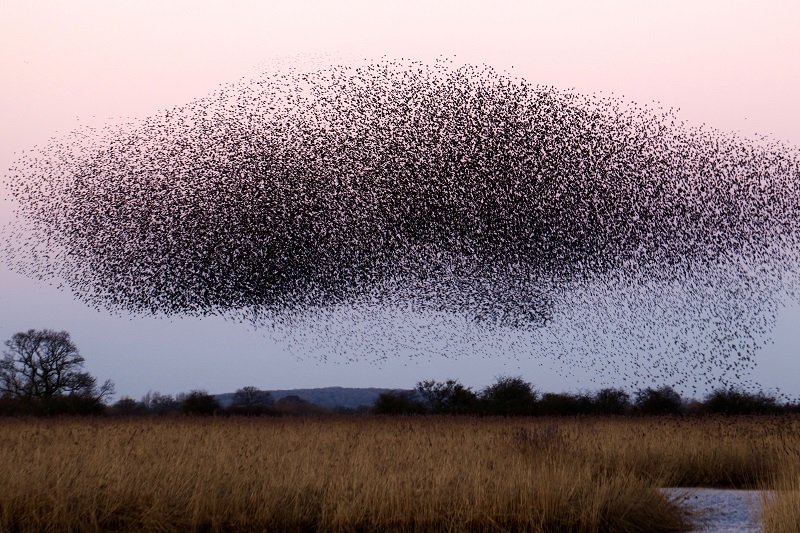
Hunt for Deer
Autumn is the perfect season for photographing deer and stags. Not only do they shed their antler fur to leave clean and crisp silhouettes, but it’s also the season for rutting.
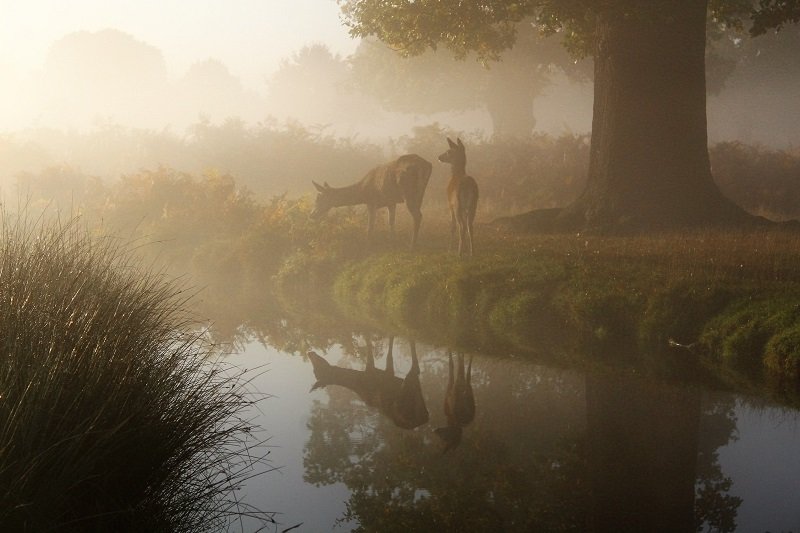
Deer rutting is when the stags start to battle for the attention of female deer, locking horns and dramatically fighting (thankfully not to the death.) You can find any local hotspots for this activity online, but in reality it’s possible to see this anywhere there is a large population of deer. Just remember to keep a safe distance from the stag and his females – Those antlers aren’t just there for show!
Add some gorgeous early morning light and a splash of mist into the equation and the deer alone can keep wildlife photographers busy all season.
Get Down Low
Getting down low and seeing the world through your subject’s eyes is a tip that can be applied to all wildlife photography, but in autumn this becomes even more effective.
The fallen leaves on the ground create a carpet of gorgeous colours, and using these in your composition can lead to fantastic results. A swathe of out of focus fallen leaves makes the perfect foreground for an animal scavenging about in a last ditch forage before winter takes hold.
You Might Like… 10 Tips to Take You Pet Photography to the Next Level
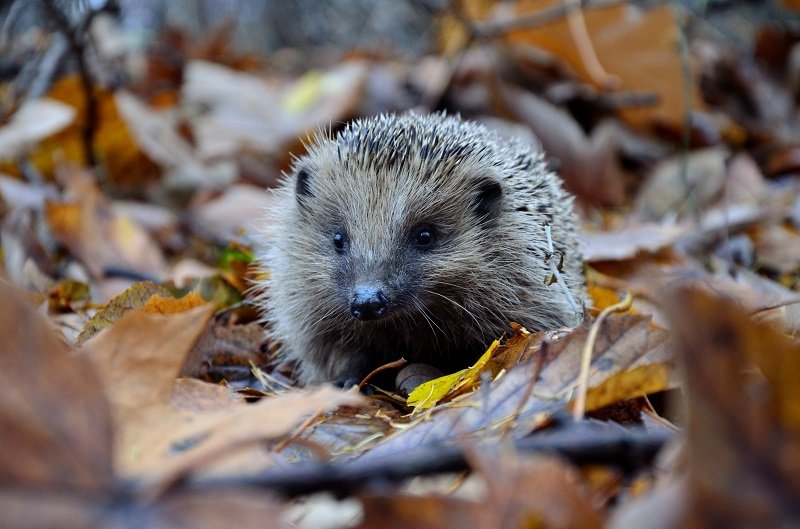
Macro Photography in Autumn
Winter is often a rather barren time for macro photographers, but before the insects disappear and the branches turn bare there is a plethora of beauty for you to explore in both flora and fauna.
You Might Like… From Capture to Completion – An Introduction to Adobe Lightroom
Leaves and Berries
Take advantage of the autumn colour by training a macro lens on the changing leaves. Try finding a well lit portion of leaves and use a heavily shadowed area as the background to make your subject really pop out of the frame, or you can go in even closer and focus on the patterns of individual leaves themselves.
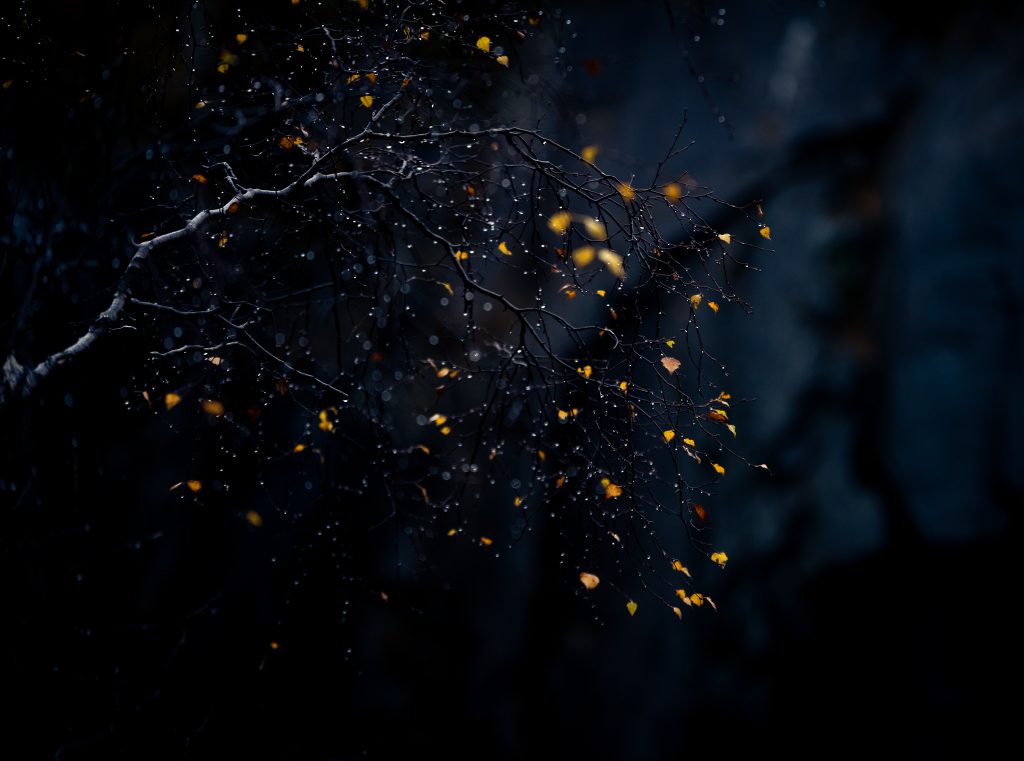
It’s not all about those golden-brown leaves though. Plenty of wild berries come into fruit when the weather starts to get colder, adding a vibrant splash of alternative colour to contrast with the leaves. You can look for the deep purple of the bilberry, or the vivid red of rowan berries and rosehips. The deep purples of elderberries combined with their brighter red stems are excellent subjects too.
Find Some Mushrooms
Nature makes up for the dwindling insect population by providing macro photographers with an abundance of funghi pushing their way up through the undergrowth. Autumn is the season for mushrooms, and with tens, if not hundreds of thousands of species known to humans it’s unlikely you’re going to run out of subjects.
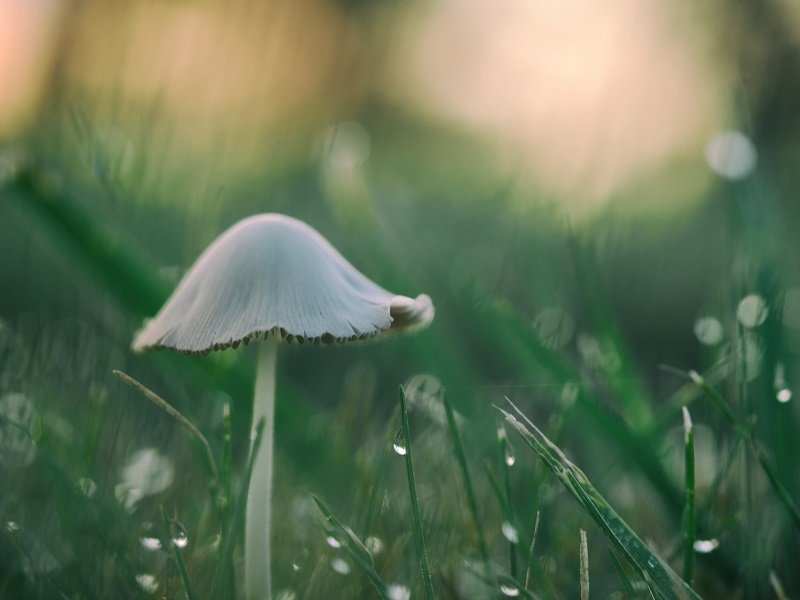
The fact that many species of mushroom tend to prefer the shaded environment of woodland means that you can actually photograph them all throughout the day. However, if you want to capture them covered in morning dew or frost it’s best to arrive early and take advantage of the best light.
Mushrooms, obviously, grow very close to the ground, so you’ll want to bring something to lie down on if the ground is wet to get that unique perspective. Test out all the angles and decide early which side of the funghi is the more photogenic. As always, never neglect what’s going on in the background!
Go Abstract
Some macro photographers’ aims are documenting the usually unseen side of life, but others are just pure artists at heart. They want to create an eye catching image out of something that the average Joe wouldn’t look twice at, and they often do this by searching for the abstract.
Find some fallen leaves and examine them closely. Find the patterns and the beauty in a simple autumnal leaf, and then try to capture that with your macro lens. Frost can also be approached this way, as can mushrooms, dew, and pretty much anything you can find.
One approach you can try is gathering up some leaves, putting them on a plate or in a bowl and covering them with water. Place the bowl in your freezer and look at how the light changes when it’s frozen. After that you can let it partially thaw and freeze it again for yet another take on the subject. The possibilities are endless!
If you can create an image to be proud of from nothing more than a single leaf, then you’ll never be short of photographic subjects again.
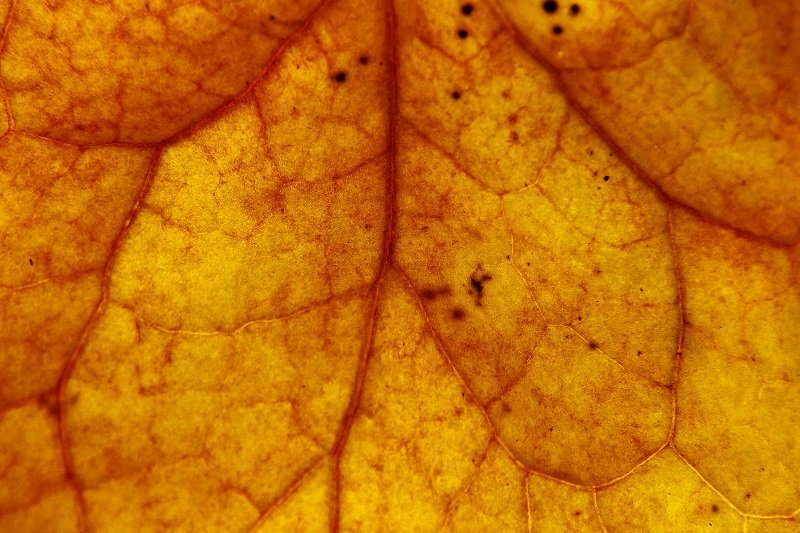
Wrap Up on a Frosty Morning
Frost may be more associated with the winter months, but plenty of frosty mornings happen towards the tail end of autumn too. Check the weather forecasts for any clear, cold nights and head out early the next morning to take advantage of the glittering ice crystals before they vanish.
Try opening your aperture up wide and transform the frost crystals into beautiful bokeh to bring more attention to your subject.
Street Photography in Autumn
Towns and cities may not be the first place you’d look for when pursuing some autumnal images, but for the discerning photographer the opportunities are definitely there.
You Might Like… Behind the Lens with Street Photographer Frank Bell
Head to the Parks
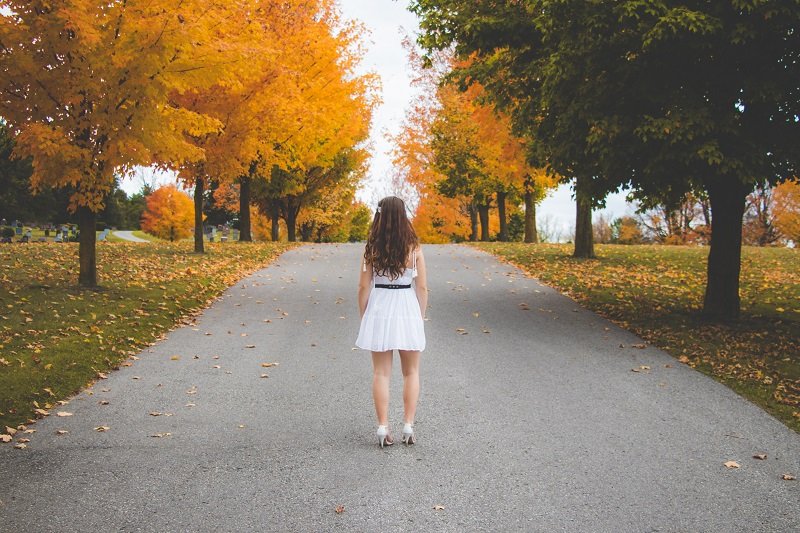
Most cities will have an area of parkland for you to spend some time shooting, and the trees planted on the pavement change colour just like those in their natural habitat. Take advantage of this in your street photography, and use the changing leaves as uniquely colourful backdrops, or try to portray the contrast between the stable and permanent city buildings and the ever-changing role of nature.
Look for Colour Contrast
We’ve already established that much of autumn’s appeal lies in it’s colour, so what better way to bring this to the forefront of your viewer’s attention than by contrasting it with the less colourful scenes in life?
The dark office suits, or the concrete jungle of the city brings out the true splendour of autumn colour even more, and using this contrast when composing your images is a very good idea.
Wait for the Weather to Change
Rainy days and street photography go hand-in-hand, and with the changeable autumn weather you can add an extra element in there too. Try to capture the moment when the weather changes for the worse, with umbrella-less people dashing for cover and the rain dancing off the pavements and roads.
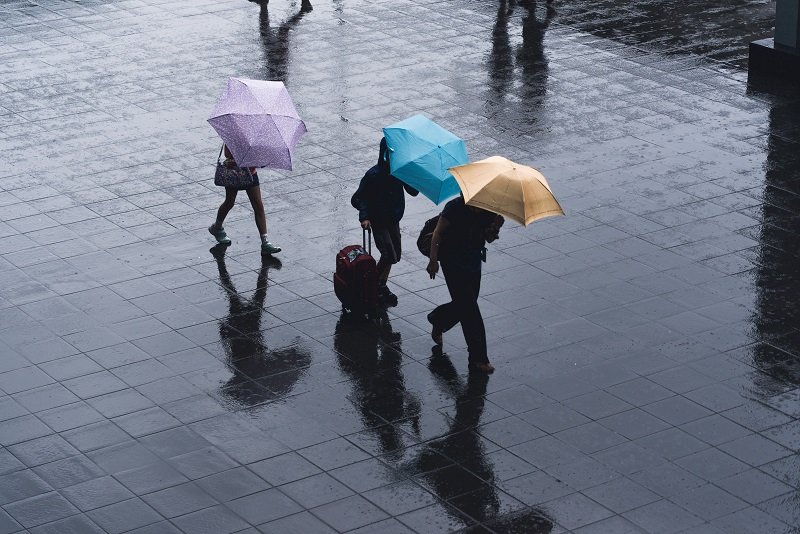
I find that people’s whimsical side tends to come out in their umbrellas too, oddly enough. Try to find the standout one in a crowd full of black umbrellas, or use the colourful ones to complement the autumn colours around the streets.
You Might Like… 5 Places to Start Your Street Photography Journey
Wedding and Portrait Photography in Autumn
The wedding season draws to a close when summer ends, but plenty of happy couples still tie the knot in the throws of the changing seasons. In many ways, this is actually better for the photographer, and the same can be said for portrait photography too. If you get a wedding or portrait booking in autumn, you should thank your lucky stars.
Use the Golden Hours
We all know by now that the times just after sunrise and just before sunset offer the best light for our photography, but let’s be honest – It’s not always convenient. You try getting your model to wake up at 2:30am for a summer sunrise shoot, or asking them to stay out until 10pm so you can catch that evening light. It’s rarely, if ever, going to be an acceptable request.
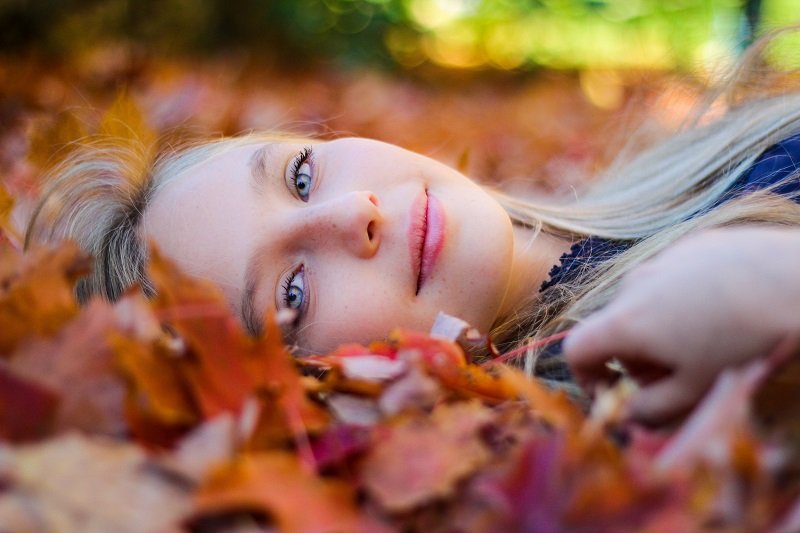
Fortunately, once autumn rolls around the golden hours arrive at a more socially acceptable time. Take advantage of this small window where sunrise shoots are feasible but the environment is vibrant and beautiful.
Head to some woodland in the morning and backlight your subject in front of the changing leaves for a beautifully warm portrait. Or if children are involved get them to play around in the fallen leaves (they won’t need much encouragement) and capture the more spontaneous moments.
It’s even possible to use this golden light in wedding photography too – Something which just doesn’t happen in the high-season. With the sun setting a lot sooner it’s going to be much easier to convince the bride and groom to head outside for a few shots before their wedding breakfast.
You Might Like… 6 Reasons to Start Using Prime Lenses
Bring Some Extra Clothing
It might get cold, but this isn’t for you. Autumn photography places a lot of emphasis on colour, so you want to take advantage of the wonders of colour contrast again.
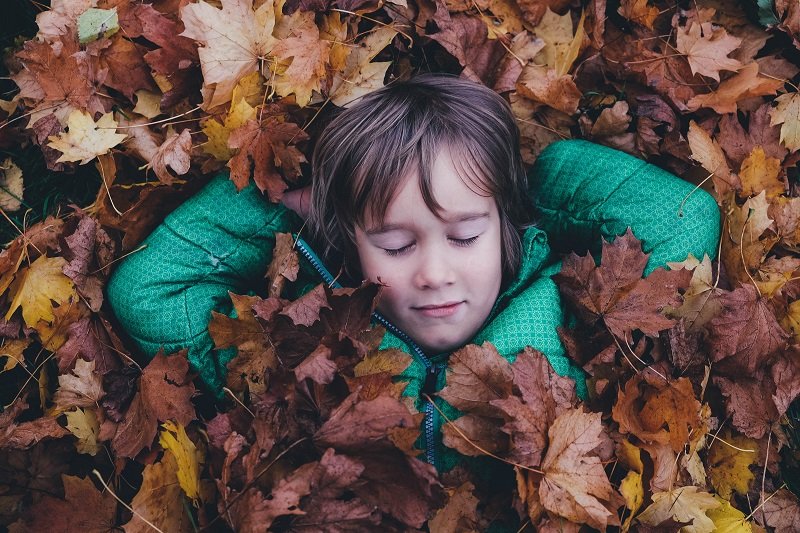
What your subject is wearing is an important factor in portrait photography, and we want to focus on creating a harmonious colour spectrum in our shots. Personally I like to aim for a more harmonious array of colours, putting the yellows and oranges of the autumnal canopy alongside deep reds and burgundies.
Try it for yourself – Ask your model to don a burgundy hat and scarf and use the autumn vegetation as a background. You won’t find many better matches than that!
Create a Natural Frame
This works particularly well for wedding photography in the autumn. Find some low hanging leaves or a fallen branch and use it as a compositional tool. Try positioning these leaves close to your camera and then frame the happy couple in the gaps. Use a wide aperture to throw the leaves out of focus, resulting in a gorgeous, colourful frame for the newly married pair.
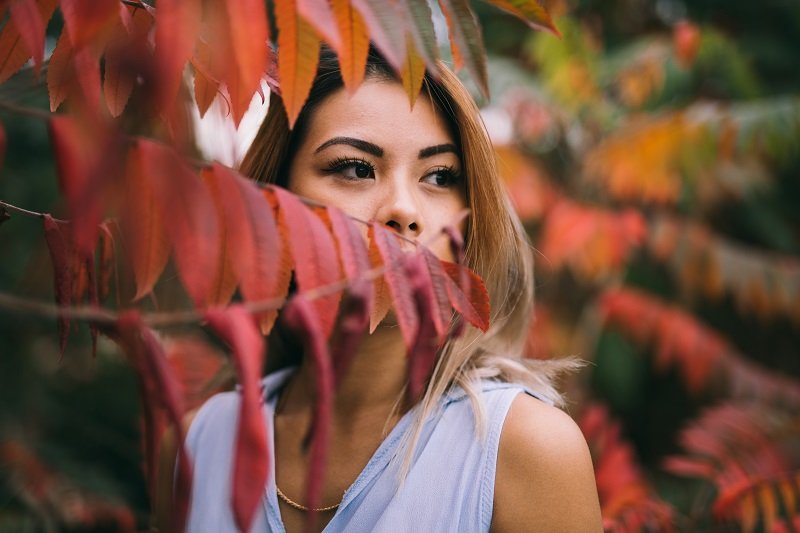
Throw Leaves, Not Confetti
The age old wedding tradition of launching confetti over the bride and groom is one of the iconic shots that you just don’t want to miss as a wedding photographer, but autumn opens up new avenues to explore.
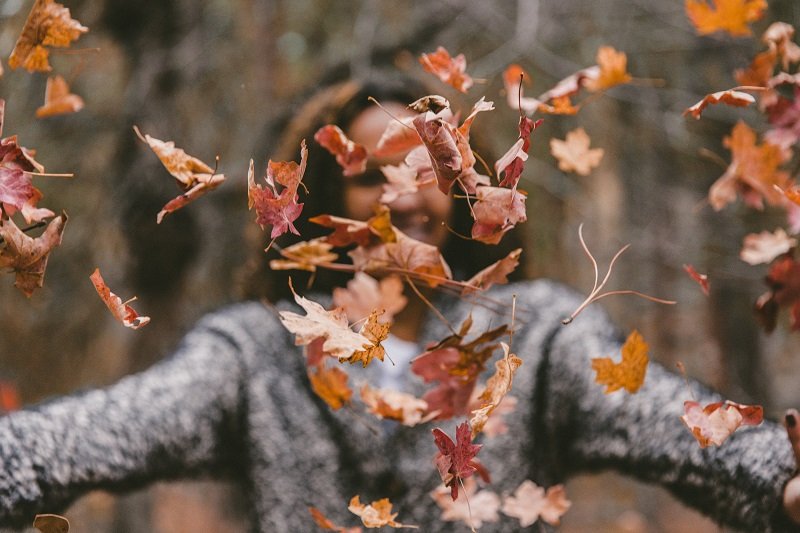
Arrive early and collect a pile of fallen leaves then ask your guests (with permission from the bride of course) to throw them over the pair instead of confetti. It makes for a far more unique shot that the standard confetti capture. Just please remember not to choose leaves covered in dirt and mud.
You Might Like… The Photographer’s Glossary – A Guide to Common Photography Terms
Closing Thoughts
I’ve purposefully published this Ultimate Guide to Autumn Photography pretty early, giving you plenty of time to read through all the ideas here and create your own list of subjects you would like to shoot this coming fall.
Beware, autumn can be very fleeting if the weather is unkind, so make sure you take full advantage of the time you have this season. I’d love to see your results in the comments below!
Read More…
The Photographer’s Glossary – A Guide to Common Photography Terms
A Beginner’s Guide to Astrophotography
The Orton Effect and How to Apply it in Photoshop
 |
 |
 |
 |

About Alex W.
Alex is the owner and lead writer for Click and Learn Photography. An avid landscape, equine, and pet photographer living and working in the beautiful Lake District, UK, Alex has had his work featured in a number of high profile publications, including the Take a View Landscape Photographer of the Year, Outdoor Photographer of the Year, and Amateur Photographer Magazine.
Thoughts on "Ultimate Guide to Autumn / Fall Photography"
 |
 |
 |
 |
You can Get FREE Gifts. Furthermore, Free Items here. Disable Ad Blocker to receive them all.
Once done, hit anything below
 |
 |
 |
 |